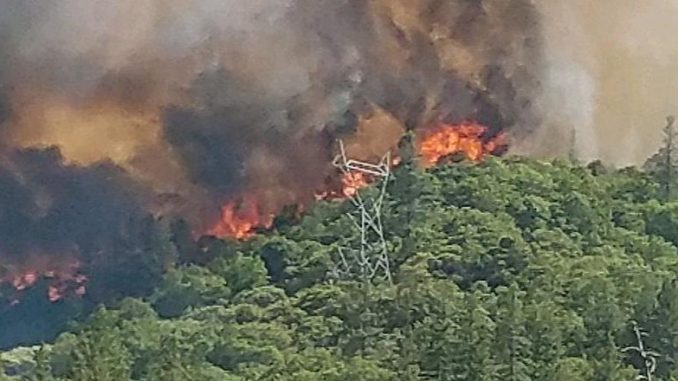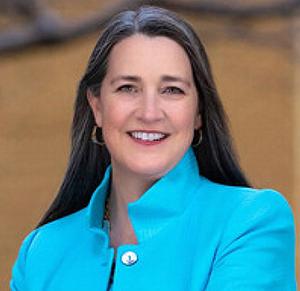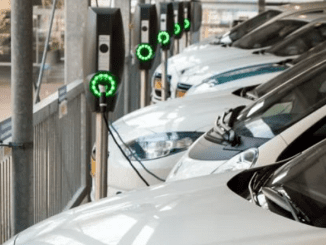
CHICO, California, July 21, 2021 (ENS) – Pacific Gas and Electric Company, PG&E, is implementing a new initiative to expand the undergrounding of electric distribution power lines in High Fire Threat Districts. The goal is to further harden its system and help prevent wildfires like the 2018 Camp Fire that forced the utility to declare bankruptcy and reorganize.
The new infrastructure safety initiative, announced today in Butte County by PG&E Corporation CEO Patti Poppe, is a multi-year effort to underground 10,000 miles of power lines.
PG&E’s commitment represents the largest effort in the United States to place power lines underground as a wildfire risk reduction measure.
“We want what all of our customers want – a safe and resilient energy system. We have taken a stand that catastrophic wildfires shall stop. We will partner with the best and the brightest to bring that stand to life. We will demand excellence of ourselves. We will gladly partner with policymakers and state and local leaders to map a path we can all believe in,” Poppe said.
In addition to reducing wildfire risk, undergrounding benefits customers by lessening the need for public safety power shutoffs, which are called as a last resort during dry, windy conditions to reduce the risk of vegetation contacting live power lines and sparking a wildfire.
Undergrounding also eases the need for vegetation management efforts, leaving more of California’s trees standing.

PG&E is a combined natural gas and electric utility serving more than 16 million people across 70,000 square miles in Northern and Central California.
Today, PG&E maintains more than 25,000 miles of overhead distribution power lines in the highest fire-threat areas – Tier 2, Tier 3 and Zone 1 – representing more than 30 percent of its total distribution overhead system.
To underline the extent of this huge task, PG&E says 10,000 miles of PG&E power lines is about the distance of 11 round trips from Chico to Los Angeles or almost half way around the world.
The exact number of projects or miles undergrounded each year through PG&E’s new expanded undergrounding program will evolve as PG&E performs further project scoping and inspections, estimating and engineering review.
PG&E will engage customers and stakeholders as it develops a plan and reviews potential additional undergrounding sites based on a variety of factors, including local municipal planning and safety considerations.
Engineering an underground electric system requires designing the system around existing water, natural gas and drainage systems, as well as planning for future road widening. PG&E intends to work closely with customers and local, state, federal, tribal and regulatory officials throughout this new safety initiative.
In the past, undergrounding has been done on a select, case-by-case basis, and largely for reasons other than wildfire risk reduction. But as a result of breakthroughs PG&E has achieved on undergrounding projects in recent years, placing power lines underground can now play a much more prominent role in PG&E’s ongoing efforts to harden the electric grid.
Following the devastating October 2017 Northern California wildfires and the 2018 Camp Fire, PG&E began to evaluate relocating overhead power lines underground as a wildfire safety measure, and did some demonstration projects as part of PG&E’s Community Wildfire Safety Programs:
- – From 2018-2020, PG&E completed multiple demonstration projects aimed at converting overhead power lines to underground in high fire-threat areas of Alameda, Contra Costa, Nevada, and Sonoma counties.
- – In 2019, PG&E said it would rebuild all its power lines underground in the Town of Paradise as it helps the community recover from the Camp Fire that burned the Butte County town to the ground in November 2018.
- The company is also rebuilding power lines underground within the 2020 North Complex Fire footprint in Butte County.
Through these demonstration projects and rebuild efforts, PG&E has been able to refine the construction and cost requirements associated with targeted undergrounding, enabling the acceleration and expansion of undergrounding projects.
In addition to expanding its undergrounding, PG&E is doing ongoing safety work, as outlined in the utility’s 2021 Wildfire Mitigation Plan. Learn more about PG&E’s wildfire safety efforts by visiting pge.com/wildfiresafety.
Wildfire Threat Intensifies As Climate Heats Up
California faces an ever-increasing threat from catastrophic wildfires, extreme weather and higher temperatures, PG&E recognizes. Recent state and federal climate assessments warn the threat is growing.
California’s Fourth Climate Change Assessment found the average area burned statewide would increase 77 percent if greenhouse gas emissions continue to rise. The assessment also said prolonged drought and higher temperatures will triple the frequency of wildfires.
Multiple factors contribute to wildfire risk across PG&E’s service area. These include vast tree mortality following a historic five-year drought. Fire season is now extended due to prolonged periods of high temperatures, extreme dryness, tinder-dry grass and record-high winds increasing the number of wildfires and making them more dangerous.
More than half of PG&E’s service area is in extreme or high fire-risk areas as designated by the California Public Utilities Commission’s Fire-Threat Map.
If you smell natural gas, see downed power lines, or suspect another emergency situation, leave the area immediately and call 9-1-1. Then, call PG&E at 1-800-743-5000. Never approach or touch downed power lines.
Featured image: A transmission tower carrying a power line supplying California is in the path of the Carr Fire near Redding in California’s Central Valley, August 22, 2018. (Photo by the Western Area Power Administration)
© 2021, Environment News Service. All rights reserved. Content may be quoted only with proper attribution and a direct link to the original article. Full reproduction is prohibited.



